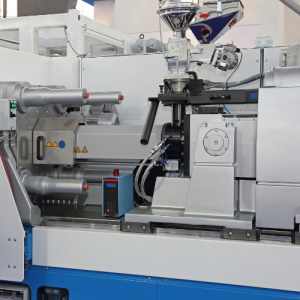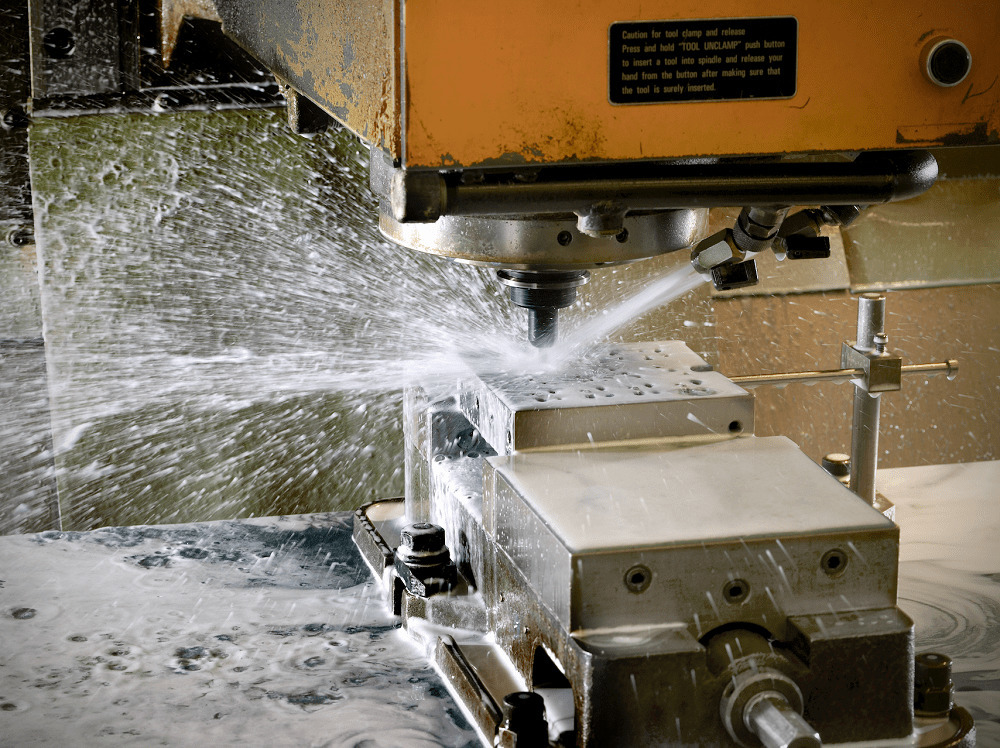
According to Thomas Net:
The molding process is a technique through which a material, commonly plastic, but also metal, rubber, or powder mixtures, is shaped on the outline of a die or mold, often via a plastic molding machine. There are many different techniques for molding materials, just as there are many different applications for each molding process.
There are two primary types of plastics: thermosets and thermoplastics. The main difference between these two types of plastics is that thermosets permanently cure. This means that once the plastic is melted into a shape, it cannot be melted back down to molten plastic. Once the plastic takes a shape, it will retain that shape. If the plastic is melted, it simply burns. This is different from thermoplastics, which can be cured into a shape, then melted back down to molten plastic and reformed through further curing.
Custom molded thermoplastics are produced in nurdles, tiny pellets of plastic intended to make transport easier for commerce. When the nurdles are used by a manufacturer to produce a plastic application, they are melted together to form a molten bath, shaped into the final form and then cured, or dried. Once the item is cured, it is in its final shape. Thermosets, because they cannot be melted down following curing, are shipped as raw liquid resin or powders.
Metals, on the other hand, are often shipped as stock, including bar stock, pipe stock, and metal rods. Stock is a form of shaped raw metal that comes in irregular sizes. It is transported to manufacturers so they can melt the metal down and use it for other purposes, including further rendering or final manufacturing. Other types of metals, including many used for certain molding operations, are shipped as powders that can be heated into a molten form. Metals are similar to thermoplastics in that they can be melted down and reformed following setting.
Most molding techniques require the use of a releasing agent. A releasing agent is a type of lubrication that reduces the chances of a molded material sticking to the interior surface of the mold.
Between different methods of molding, there are a few common features. One is the presence of a material to be molded, typically in molten form. Another is the mold, which contains the pattern the material will be shaped into. Finally, the needed force, or pressure, that expands the material into the geometry of the mold. The differences between different molding methods involve variables in these three constants. For example, some kinds of methods work with different materials, some with varying molds, and some use different pressure sources.
Thermoforming involves sheets of thin thermoset or thermoplastic plastic that are pressed into the mold through the use of a vacuum. Plastic molding machines that perform thermoforming generally move a sheet of plastic over a mold so the plastic hermetically seals to the pattern. The plastic is heated until it is malleable. Then, a vacuum is applied, which sucks the plastic into the mold. Cutting devices trim excess plastic around the mold edges and the plastic is removed from the mold. The molded plastic is distributed down the line as a fresh sheet of plastic moves into position.
Vacuum forming, or vacuforming, is a type of thermoforming for thermoplastics that differs in the gauge capability and application. Vacuforming is typically only used for thin plastic sheets, or “film.” The film is stretched over a mold, the inverse of thermoforming, and then the vacuum is applied to suck the film around it.

Image credit: The Rodon Group
Injection molding can use thermosets or thermoplastics. A machine heats and mixes the plastic until it is in a pliable molten shape, then a screw device turns to force the plastic into an outlet that leads to the mold. Once the plastic sets, the mold opens to eject the product.
Reaction injection molding uses only thermosets and involves a special curing operation that takes place within the mold. It is also slightly slower than standard plastic injection molding.
Compression molding is, in some ways, the opposite of injection molding. The molten plastic is deposited into a mold, which then closes. There is an inlet hole somewhere in the mold through which another device applies pressure. The pressure forces the plastic outward into the hollow cavity of the mold, achieving the final shape. Compression molding often produces items that feature a great deal of “flashing,” or excess plastic, that must be trimmed off. Compression molding can also be used to form rubber items.
Transfer molding is similar to compression molding but involves a metal plunger to apply pressure. The molten material is deposited into the mold and sealed within. A metal plunger, which is like a large shaft, is pressed deep into the mold, forcing the material to spread outwards and fill in the geometry of the mold. Transfer molding can be used on plastics or rubber.
Extrusion is one of the few molding methods that can be performed on hot or cold material. In extrusion processes, a die is used as opposed to a three-dimensional mold. A die is a two-dimensional hole with a defined geometry through which a material is forced, or extruded. The extruded material, usually metal like aluminum or a plastic, takes on the shape of the die geometry. Continuous extrusion involves the production of very long extruded pieces, while semi-continuous extrusion produces several similarly-sized pieces.
Blow molding resembles compression molding but involves the use of pressurized gas to pressure the plastic into the geometry of the mold. A mold is filled with molten plastic and sealed. The sealed mold has a small hole, into which the pressurized gas is pumped. Although the gas compresses, it eventually creates so much outward pressure that the plastic fills in the geometry of the mold.
Rotational molding involves rotational motion to effect the pressure needed to fill the mold. Molten plastic is poured into a mold and sealed. The mold then rotates, allowing the molten plastic to drip down the sides and fill in all the crevices and patterns of the mold.
Hydroforming is a metal-specific molding technique that uses water pressure to force metal into a dye or mold. The metal, which is heated to a pliable temperature but is not molten, is inserted into the mold or dye machine and sealed within. A small opening allows water to be pumped in at high hydraulic pressure. The extreme pressure of the water in the mold forces the metal to fill the mold geometry. The water is then drained and the workpiece ejected. A variant of hydroforming involves the use of explosives, called explosive hydroforming. In this method, the pressure on the water is caused by a detonation of a mild explosive. The sudden pressure of the outward moving explosion causes the water to be forced into the metal, which is then forced into the mold geometry.
Laminating is a simple type of plastic molding that exerts pressure on a sheet of plastic, specifically a laminate, onto a substrate. Sometimes the laminate overlaps the substrate and a second sheet of laminate on the opposite side is forced to adhere to the first sheet. The force to adhere the plastic to the substrate is either provided by heat or physical pressure from a block.
Molding techniques are varied because various products call for different kinds of techniques and molding equipment. For instance, blow molding and rotation molding are adept at creating hollow plastic products like bottles and cups, while laminating gives a product surface an appealing sheen. When selecting a molding method, it is important to consider the abilities of the technique with regard to the final product desired. Additionally, molding methods vary in terms of production time. Rotational molding generally deals with slow curing plastics, while the method itself is much slower than the immediacy of compression molding.